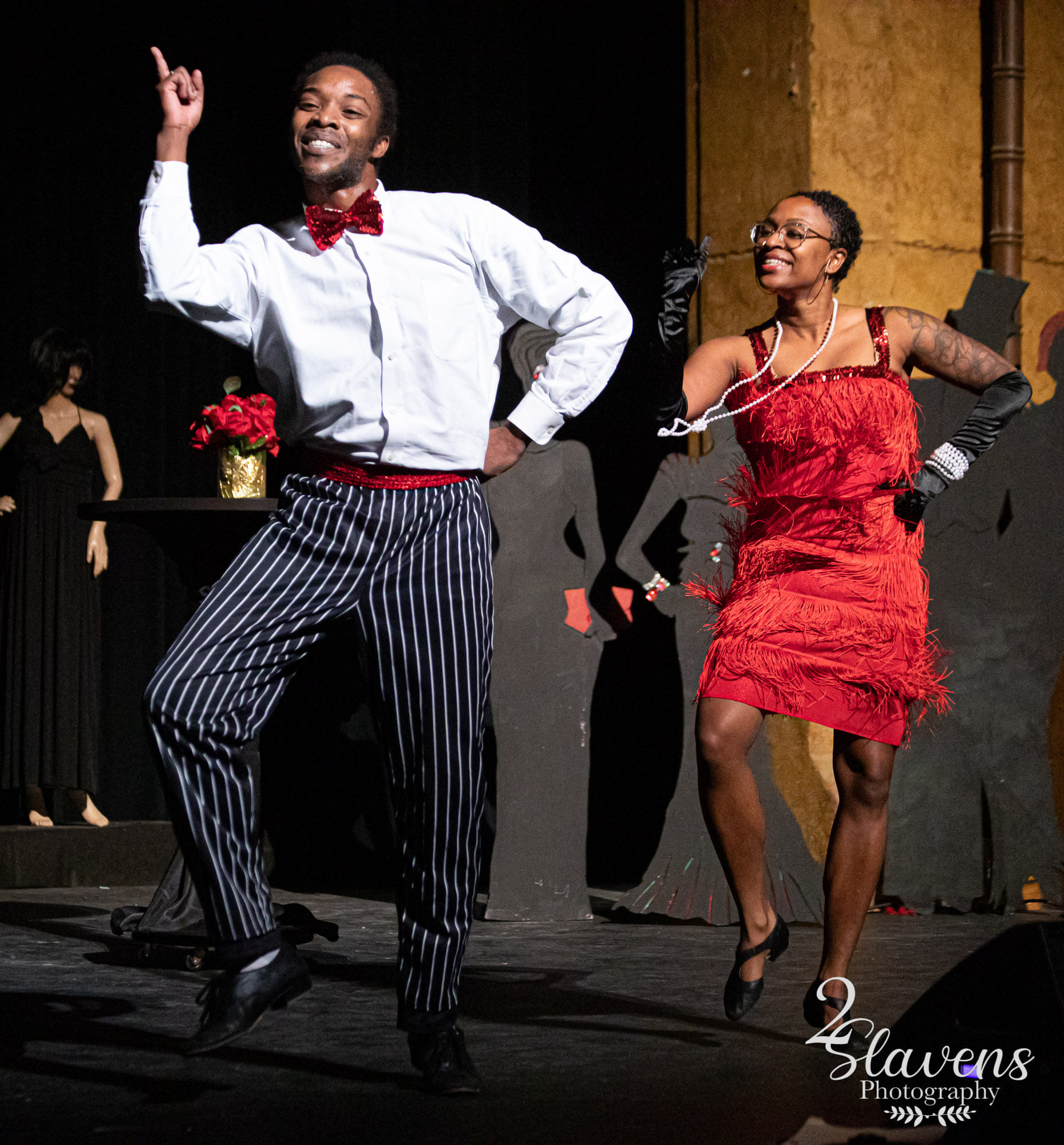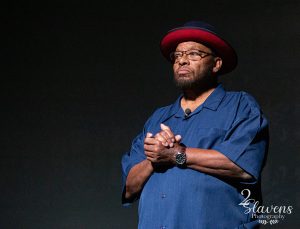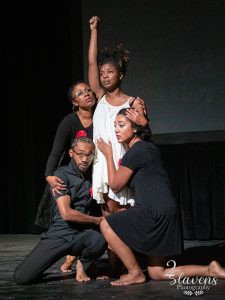
“The Price of Progress”
It was with great interest that I saw “The Price of Progress: The Indiana Avenue/IUPUI Story” on Thursday at the newly renovated Madam Walker Legacy Center. Located on famed Indiana Avenue, it is one of Indy’s premier historic sitHome – Madam Walker Legacy Center. Conceived by IUPUI Multicultural Center Director Khalilah Shabazz and written by Vernon A. Williams, the play was originally produced in 2019 to commemorate IUPUI’s 50th anniversary. The show continues Friday, November 5, and Saturday, November 6, with both performances at 7:00 p.m.
I was interested in seeing the drama due to my extensive experience with the area. A year ago, I moved to Haughville, a historic neighborhood located on the Near Westside, just minutes from both the Walker Center and IUPUI. Secondly, beginning in the early 1970s, I was employed as a producer-director at WRTV Channel 6, where I regularly produced half-hour primetime specials, including the very first documentary on the life of Madam C.J. Walker, the jazz legacy of Indiana Avenue, and yet another one on the history of the Madam Walker Theatre itself. As far as IUPUI, during the 80s, I was an adjunct faculty member in the Department of Communications for several years.

“The Price of Progress”
Combining drama, music, dance, comedy and archival video, the play’s sponsors are IUPUI and the Africana Repertory Theatre (A.R.T.I.) of IUPUI, which uses a multidisciplinary approach to what it dubs “edutainment.” Directed by McKenya Dilworth, the production is an ambitious effort that seeks to address a controversy that, to its credit, IUPUI tackles head on. In the play’s news release, there is a reference to IUPUI’s admission of “perceived and actual complicity” on the part of the institution in the displacement of primarily Black residents and the gentrification of Indiana Avenue and Ransom Place neighborhood. The play addresses that reality, but also celebrates what is calls “healing measures” assumed by campus leadership in recent years. Those measures have included celebrating the heritage of a community that was regarded as “The Harlem of the Midwest” for its flourishing culture of Black-owned businesses, including that of Madam C.J. Walker, who made her fortune in its midst, its artistic achievements, educational contributions, and jazz legacy.
Williams’s two-hour play itself is not only well-researched, informative, and educational, it is also entertaining. Though plagued by a late start, numerous technical glitches, and slow transitions, which hopefully have been fixed for the remainder of the run, the production’s lack of polish was more than offset by its positive qualities, which were many.
Set in 2019 at the school’s 50th Anniversary party, which is televised, the main focus is the opening of a time capsule, which includes artifacts from the 70s. The action includes on-air reports by a TV reporter, played by Tiffany Campbell, and a series of scenes depicting her off-camera interactions with people at the event, who include a neighbor disgruntled played by Al “Doc” Watson, an IUPUI graduate played by Kelly Skaggs, and an IUPUI professor played by John Brennan Hayes. Throughout the play, the history of IUPUI and the broader historical backdrop of the country were illustrated through music, dance sequences and historic footage that was projected on a screen above the stage.

“The Price of Progress”
For the most part, the actors were convincing, but there were a few weak links. However, those who were not quite up to the task made up for it in their sincerity and obvious commitment to the material. A standout was Skaggs, who was entirely believable as the successful, progressive, empowered IUPUI graduate who spars with the character played by Watson. Her character chides his for being stuck in the past because of his perception that IUPUI helped destroy his beloved neighborhood.
Also featured was singer Curtis Rogers, who turned in an outstanding performance, as did celebrated local jazz vocalist Sandy Lomax, accompanied by a seasoned quartets who was exceptional at interpreting blues, jazz and Great American songbook standards, representing all the eras covered in the play.
Contributing to the show’s outstanding entertainment elements were the chorus of dancers, who beautifully executed superb choreography by Syearra Liggins and also appeared in various vignettes representing past decades. The super talented group included Tiffany Campbell, Leonard Harris, Malik Marks-McRath, Vajuan Savage, and Lance Williams.
With its premise that the history of Indiana Avenue is important and a legacy we can all embrace, no matter our differences, I highly encourage readers to see “The Price of Progress” for placing the Indiana Avenue/Ransom Place neighborhood in historic context. At the same time, I guarantee you will be inspired and highly entertained. Finally, you will have the opportunity to experience the Madam Walker Legacy Center, where you can almost feel the spirits of all the fabled entertainers who once played there, as well as all the famous musicians who performed along the once-flourishing clubs of Indiana Avenue.
For tickets and information about “The Price of Progress: The Indiana Avenue/IUPUI Story,” visit OnyxFest.com.





